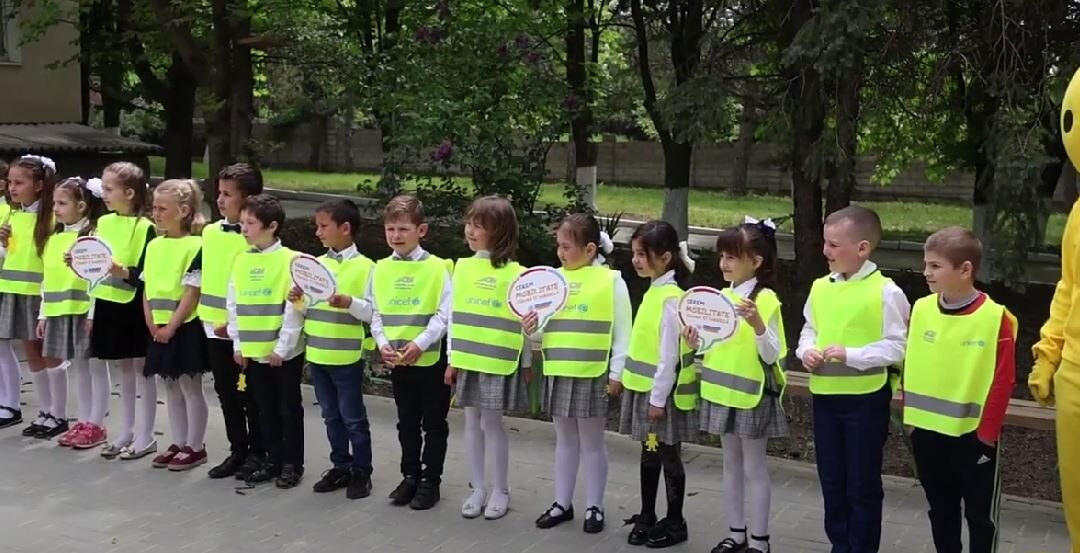Image credit (Above): Automobile Club of Moldova (ACM)
Last September, the Government of the Republic of Moldova approved amendments to the National Road Regulations mandating that all school zones should have a default maximum speed limit of 30km/h.
This policy change followed a two-year advocacy campaign led by local NGO and EASST partner, the Automobile Club of Moldova (ACM), with support from the FIA Foundation.
With the policy now in place, there is work to be done to transform every school zone in the country to ensure that they comply with the new regulations and reap the many benefits that slower speeds bring. Indeed, when paired with safer infrastructure and more inclusive street design, 30km/h speed limits not only mean safer school zones, they also contribute to better air quality and more liveable streets for everyone.
With the support of the FIA Road Safety Grant Programme and UNICEF Moldova, the ACM are using the Star Rating for Schools App to assess three schools in three cities in the north of Moldova – Balti, Ungheni and Singerei – and implement safe and low-cost ‘tactical urbanism’ interventions to demonstrate how simple infrastructure upgrades can support 30km/h speed limits.
So far, in Singerei, the project has targeted the “Dimitrie Cantemir” Theoretical High School which is located in a busy area where a high number of pedestrians share space with a high flow of motorised traffic travelling at an average speed of 60km/h. Previously, the only means of accessing the school was via a busy road with a single, faded zebra crossing situated on a corner. Unregulated roadside parking close to the crossing, particularly during peak hours when children are arriving at or leaving school, was further obscuring visibility making access particularly difficult.
To address these issues, teachers, parents, and students have been working closely with the ACM and local municipal authorities to install a set of interventions to help improve the crossing and manage speeds. This has included using plastic bollards to narrow the crossing distance and prevent parking, applying reflective markings and coloured paint to highlight the area as a school zone, installing high visibility road signs, and lowering the kerb to make it more accessible.
Community engagement in the project has been vital to better understanding the needs of those who use this crossing every day, meeting these needs, and ensuring that the work has local support. Involving children from the school also gives them a sense of ownership, encouraging them to use the crossing more and potentially even mobilising them as future advocates for road safety.
With work in Balti and Ungheni still underway, the project has already opened a dialogue with local authorities and traffic police on how to ensure schools zones in the region are made safer not just through speed limit reductions but also through improved infrastructure and street design. With the support of EASST and FIA Foundation, the ACM are aiming for at least 35% of schools in Moldova to have upgraded speed management infrastructure by 2025.

